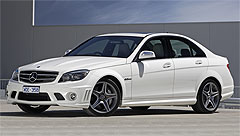Future models - Lotus - EvoraFirst look: Lotus assumes 2+2 positionSpacious: Lotus says a full-size golf bag fits behind the Eagle's 3.5-litre V6. Project Eagle emerges as new Lotus flagship and a cracking mid-engined four-seater21 Jul 2008 BRITISH sports car marque Lotus has unveiled its first all-new vehicle since the Elise of 1995 ahead of its global public debut at this week’s British International Motor Show in London. Known as Project Eagle but to wear a name that will be revealed at the show on Wednedsay, it will be the only four-seater mid-engined vehicle on the market when sales commence in Australia sometime later next year. Speculation in the UK suggests the all-new Lotus 2+2 will be priced against the Porsche Cayman S – which kicks off at $150,000 here. Styled in-house by Lotus Design’s design boss Russell Carr, and reminiscent of the firm’s M250 concept car of 2000, the Project Eagle will be Lotus’ flagship model until a larger mid-engined supercar in the Porsche 911 Turbo mould arrives after the turn of the decade, as part of Lotus CEO Mike Kimberley’s five-year strategic business plan for the Proton-owned company. With its 1970s Lancia Stratos-like wraparound windscreen and cab-forward proportions, Lotus intentionally designed the car to “…brilliantly disguise its ability to accommodate passengers in the rear of the cabin, giving the car the external characteristics of a small, nimble sportscar whilst belying its internal space.” Or, in other words, there will be more ‘real-world useability’ than the ultra-sharp but crude and cramped Europa. Like the Elise, the Eagle employs a super-stiff, self-supporting bonded and riveted aluminium structure with forged aluminium double coil-over shock absorber wishbone suspension at either end. Driving the rear wheels will be a 206kW variation of the 3.5-litre VVTi V6 petrol engine found in various Toyotas (including the Aurion, Kluger and RAV4), employing extensive Lotus-devised modifications, as well as specially developed components for the six-speed manual gearbox. As Lotus is still finalising the production version, precise performance figures are not yet available, but don’t bet against sub five-second sprint times to 100km/h, while top speed has been revealed to be 256km/h. Lotus boasts that prototypes have lapped Germany’s Nürburgring circuit faster than the lighter, lither Elise, while stability is said to be greater than the track-focussed Exige. Yet the Project Eagle is described by Lotus as “a more holistic offering than the Elise and Exige…” with the company making much of the interior space, luxury, refinement and technology. Seating is 2+2 in configuration, suggesting that the rear seats are for kids only, although they do include Isofix child-seat anchorage points. There is also ample foot room underneath the front seats.  Left: Mercedes-Benz AMG 63. Left: Mercedes-Benz AMG 63.Lotus says that a dedicated luggage area can be ordered instead of the twin seats. A sweeping, sculptured dashboard featuring modern touches such as blue LED lighting, stylised instrumentation, a flat-bottomed steering wheel and flush-mounted edge-lit switchgear are also part of a cabin aiming to be very upmarket. “Figure hugging” adjustable sports seats, high quality materials, premium leather upholstery, and an array of features not normally associated with Lotus, including touch-screen satellite navigation as part of a high-end audio/multi-media audio set-up with reverse-camera capability, tyre-pressure monitors, a garage remote-control device and – astoundingly – a glovebox, storage areas and cupholders all point to the most luxurious vehicle that the Hethel, Norfolk-based manufacturer has ever offered. These, along with advanced sound deadening materials in the carpet (at last, a modern Lotus with carpet!), suggest that the Eagle’s prey include vehicles such as the BMW M3 and Mercedes-Benz AMG 63. To that end, a set of full-sized golf clubs will fit in the boot area behind the engine bay, which is also ventilated to dissipate heat build-up. On the active safety front, electronic driver aids such as stability and traction control and anti-lock brakes are standard, while the aluminium chassis construction and a dedicated tubular steel seatbelt anchorage frame provide “immense inherent strength” during direct-impact and rollover situations, for added passive safety. Only 2000 vehicles will be (hand) made at Hethel each year, with deliveries kicking off in Europe during the second quarter of 2009. Lotus has also confirmed that convertible and higher-performance versions are in the pipeline within the next four years. All future models Alfa Romeo Alfa Romeo Abarth Abarth Audi Audi Aston Martin Aston Martin BMW BMW Bentley Bentley Chrysler Chrysler Chevrolet Chevrolet Dodge Dodge Citroen Citroen Ferrari Ferrari DS DS Ford Ford Fiat Fiat FPV FPV Foton Foton Haval Haval Great Wall Great Wall Honda Honda Holden Holden Hyundai Hyundai HSV HSV Isuzu Isuzu Infiniti Infiniti Jeep Jeep Jaguar Jaguar Lamborghini Lamborghini Kia Kia Lexus Lexus Land Rover Land Rover Mazda Mazda Maserati Maserati Mercedes-Benz Mercedes-Benz McLaren McLaren Mini Mini Nissan Nissan Mitsubishi Mitsubishi Peugeot Peugeot Opel Opel Proton Proton Porsche Porsche Renault Renault Ram Ram Saab Saab Rolls-Royce Rolls-Royce Smart Smart Skoda Skoda Subaru Subaru SsangYong SsangYong Tesla Tesla Suzuki Suzuki Toyota Toyota Volvo VolvoEvora pricingMotor industry news |
Click to shareLotus modelsResearch Lotus All future models Alfa Romeo Alfa Romeo Abarth Abarth Audi Audi Aston Martin Aston Martin BMW BMW Bentley Bentley Chrysler Chrysler Chevrolet Chevrolet Dodge Dodge Citroen Citroen Ferrari Ferrari DS DS Ford Ford Fiat Fiat FPV FPV Foton Foton Haval Haval Great Wall Great Wall Honda Honda Holden Holden Hyundai Hyundai HSV HSV Isuzu Isuzu Infiniti Infiniti Jeep Jeep Jaguar Jaguar Lamborghini Lamborghini Kia Kia Lexus Lexus Land Rover Land Rover Mazda Mazda Maserati Maserati Mercedes-Benz Mercedes-Benz McLaren McLaren Mini Mini Nissan Nissan Mitsubishi Mitsubishi Peugeot Peugeot Opel Opel Proton Proton Porsche Porsche Renault Renault Ram Ram Saab Saab Rolls-Royce Rolls-Royce Smart Smart Skoda Skoda Subaru Subaru SsangYong SsangYong Tesla Tesla Suzuki Suzuki Toyota Toyota Volvo VolvoEvora pricingMotor industry news |














Facebook Twitter Instagram